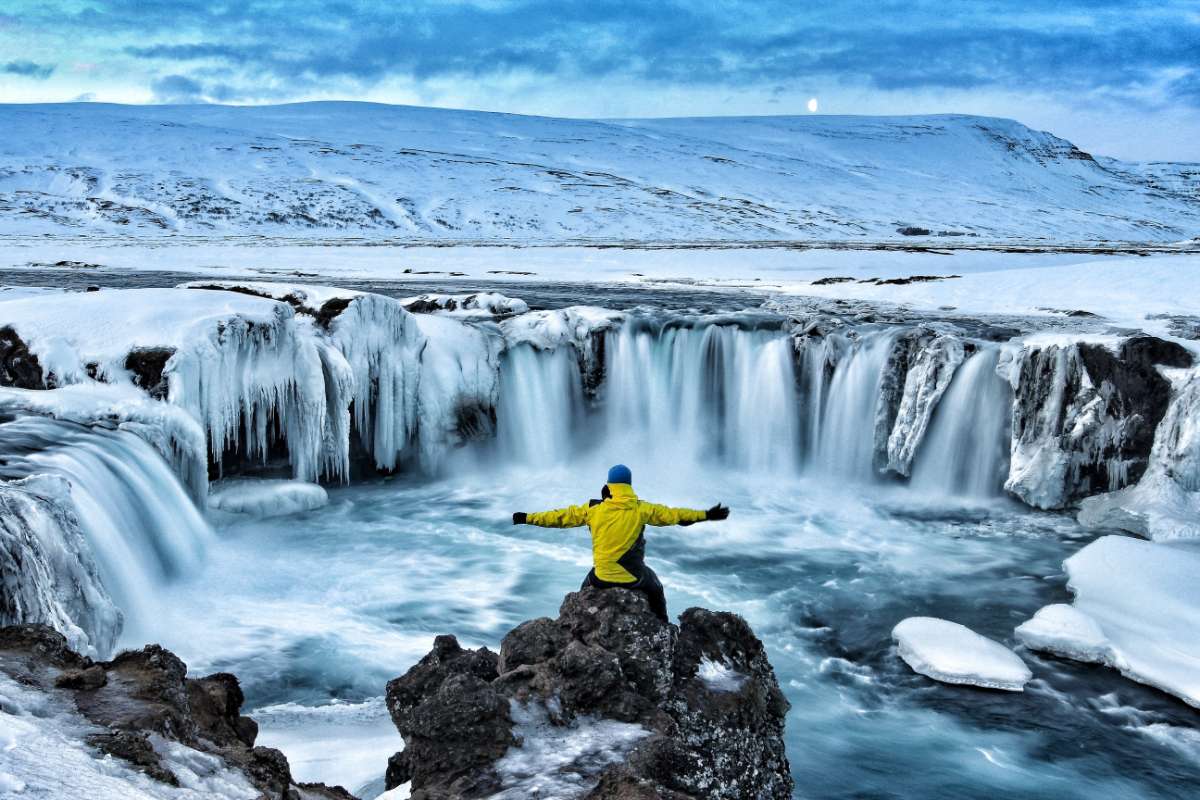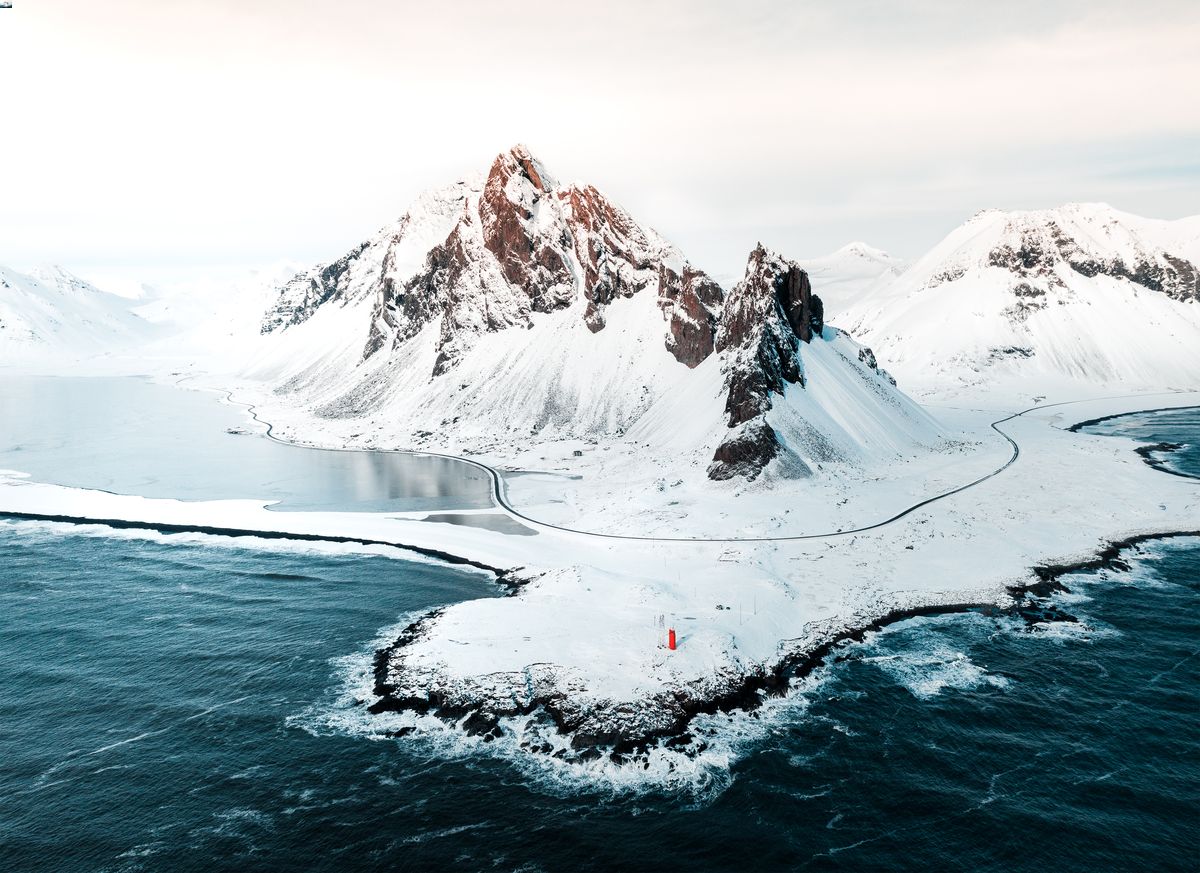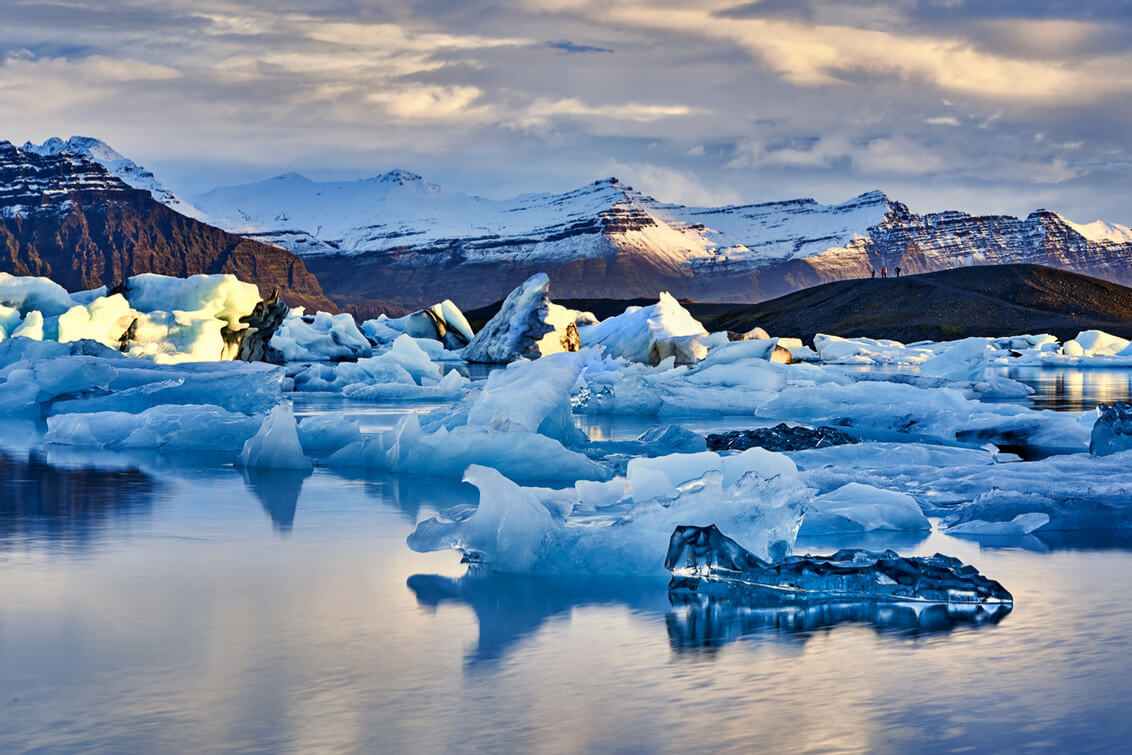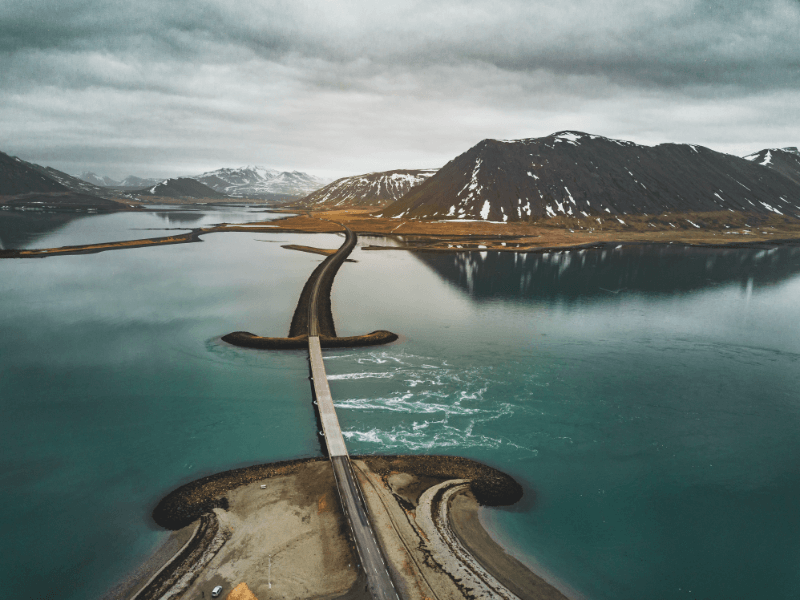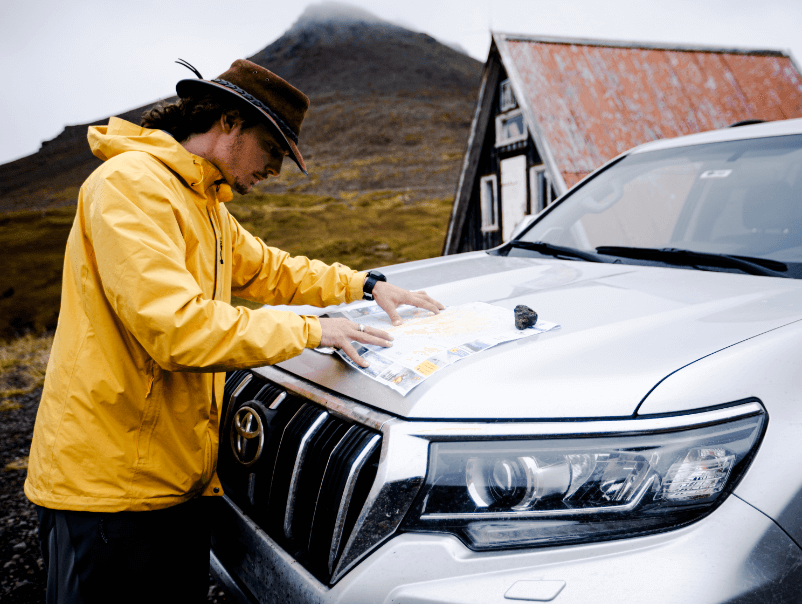Forget the picture-perfect Instagram shots for a second. Winter in Iceland isn't just about Northern Lights and hot springs. It's cold, the weather's unpredictable, and driving on icy roads is no joke.
Think you're ready for that? Most people aren't, and they end up cold, stranded, or just plain miserable. But that doesn't have to be you. If you plan on renting a campervan in Iceland and want to make the most of your trip without the nasty surprises, keep reading. We're breaking down the essentials to help you conquer the cold and have a trip you'll never forget.
Is Iceland in Winter Right for You?
Tempted to book a ticket after seeing those dreamy winter photos? Don’t know if winter is the best time to visit Iceland but you want to give it a go? Hold up. Iceland in winter isn't exactly everyone's cup of tea. The weather's fierce, the days are short, and it's nothing like a Hallmark Christmas movie. Before you pack your bags and get ready for that Iceland in winter travel, here's when it's worth the plunge and when it's better to wait for summer.

Why It’s Worth the Trip
- Northern Lights You Won't Forget: If seeing the Northern Lights in Iceland is on your bucket list, winter gives you the best shot. Long nights mean more chances to catch the show.
- Fewer Tourists, More Room to Explore: Say goodbye to crowded attractions. Visiting in winter means more space for you and fewer photo bombers.
- Epic Winter Activities: Snowmobiling on glaciers, exploring ice caves, and dog sledding. If you're craving adrenaline, winter's got you covered.
- Otherworldly Landscapes: Think snow-covered lava fields and frozen waterfalls. It's like stepping into another world.
- Hot Springs That Hit Different: There's nothing like soaking in a steamy hot spring while the snow falls around you. It's a whole vibe.
- Cheaper Travel Costs: Winter is off-season, which means lower prices on flights, accommodations, and tours. If you're looking to save money, winter's the time to go.
Why it Might Test Your Travel Spirit
- Unpredictable Weather Conditions: Storms can pop up out of nowhere, shutting down roads and canceling tours. If you can't go with the flow, you'll be miserable.
- Short Days and Long Nights: With as little as four hours of daylight, your sightseeing time is seriously limited. If you need sunlight, this could be a dealbreaker.
- It's Cold. Really Cold: If you're not good with freezing temps and icy winds, you won't have a good time. Period.
- Limited Access: Some hiking trails and highland roads are no-go zones in winter. If exploring every corner is your goal, wait for summer.

Iceland’s Winter Weather: What to Expect Month by Month
Now that you are aware of the brutal, honest truth about our winter conditions, let's talk about what you can expect when it comes to the weather.
November:
Average Temperature: 2°C (36°F)
- Daylight: 5-8 hours
- Precipitation: Increasing, with a mix of rain and snow
- Notable: First snowfall and the Northern Lights start making appearances.
December:
- Average Temperature: -0°C (32°F)
- Daylight: 4-5 hours (Yep, that's it)
- Precipitation: 79 mm, mostly snow
- Notable: December is our darkest month of the year, but Christmas lights brighten up the cities.

January
- Average Temperature: -0°C (32°F)
- Daylight: 4-6 hours
- Precipitation: 76 mm, mostly snow
- Notable: January is the coldest month of the year but also the best for Northern Lights spotting.
February
- Average Temperature: -0°C (32°F)
- Daylight: 7-10 hours
- Precipitation: Frequent snow, especially in the north
- Notable: It's still freezing, but at least the days are getting longer.
March
- Average Temperature: 1°C (33°F)
- Daylight: 10-13 hours
- Precipitation: Mix of rain and snow
- Notable: A transition month. The weather is still unpredictable, but it's getting milder.

Iceland Weather by Month comparison
| Month | Average Temperature | Daylight Hours | Precipitation | Notable Info |
|---|---|---|---|---|
| November | 2°C (36°F) | 5-8 hours | Increasing, with a mix of rain and snow | First snowfall and the Northern Lights start making appearances. |
| December | -0°C (32°F) | 4-5 hours | 79 mm, mostly snow | The darkest month of the year, but Christmas lights brighten up the cities. |
| January | -0°C (32°F) | 4-6 hours | 76 mm, mostly snow | Coldest month of the year and best for Northern Lights spotting. |
| February | -0°C (32°F) | 7-10 hours | Frequent snow, especially in the north | Freezing, but days are getting longer. |
| March | 1°C (33°F) | 10-13 hours | Mix of rain and snow | Transition month with unpredictable weather, but getting milder. |
Best Things to Do in Iceland in Winter (Beyond the Tourist Traps)
Sure, everyone knows about the Blue Lagoon and Golden Circle. But Iceland has a lot more to offer in winter than the same old tourist hotspots. Here are some of the best winter activities in Iceland and some lesser-known experiences that will make your trip truly unforgettable:
How and Where to See The Northern Lights (Without the Crowds)
The Dirty Secret About Northern Lights Tours
Most Northern Lights tours pack you into a bus with dozens of other tourists, taking you to overcrowded spots where everyone's fighting for the same view. Not exactly the magical experience you were hoping for, right?
DIY Guide: Best Spots to See the Aurora Borealis from Your Campervan
If you want a more intimate encounter with the Northern Lights, then skip the bus tours and hunt for the lights on your own. Here's how:
- Thingvellir National Park: Far enough from city lights but close enough to Reykjavík for an easy drive.
- Snaefellsnes Peninsula: Less crowded, with stunning coastal views to complement the Northern Lights.
- Westfjords: Remote, wild, and practically tourist-free in winter. Perfect for an
unforgettable Northern Lights show.
Pro Tip: If you want to see the Northern Lights, always check the aurora forecast and find a spot with clear skies. And remember, patience is key. The lights don't follow anyone's schedule.

Winter Festivals and Celebrations That Tourists Miss
Visiting Iceland during local festivals gives you a taste of authentic Icelandic culture. Plus, it's a great way to beat Iceland's winter blues and join in on the festivities.
- Þorrablót (Mid-January to Mid-February): An ancient Viking festival celebrating midwinter. It's all about traditional food, drinks, and storytelling.
- Bolludagur, Sprengidagur, and Öskudagur (February): Iceland's version of Carnival, celebrated with sweet buns, salted meat, and playful costumes.
- Dark Music Days (Late January): A contemporary music festival celebrating Icelandic composers and international artists. It's an offbeat cultural experience you won't find in a guidebook.
- Winter Lights Festival (Early February): Reykjavík lights up with art installations, cultural events, and live performances. It's a great way to see the city in a new light—literally.
Traditional Icelandic Winter Foods (What to Try & What to Avoid)
Local Dishes You Need to Try (If You're Brave Enough)
Icelandic winter cuisine isn't for the faint of heart. It's bold, hearty, and deeply rooted in Viking tradition. Here are some dishes worth trying:
- Hákarl: Fermented shark that smells worse than it tastes. A rite of passage for adventurous eaters.
- Svið: Boiled sheep's head. It's exactly what it sounds like.
- Hangikjöt: Smoked lamb traditionally served during Þorrablót. A safer bet for less adventurous palates.

Where to Find Authentic Icelandic Food That's Not a Tourist Trap
- Laufabrauð Cafés: Look for local spots serving this crispy, deep-fried flatbread during winter festivals.
- Family-Run Guesthouses: Often serve home-cooked meals with traditional Icelandic dishes you won't find in touristy restaurants.
- Small Town Eateries: Venture out of Reykjavík and into smaller towns for a more authentic dining experience.
Iceland's Winter Activities That Actually Live Up to the Hype
Not all winter activities in Iceland are created equal. Some are tourist traps that drain your wallet, while others are genuinely unforgettable. Here's the real scoop on which ones are worth your time and money and how to avoid getting ripped off.
Snowmobiling on Glaciers: Is It Worth It?
The Honest Truth About Cost vs. Experience
Snowmobiling on Iceland's glaciers is as epic as it sounds, but it's also expensive. Expect to pay anywhere from $200 to $300 per person for a guided tour. Is it worth the price? If you crave adrenaline and want to experience the vastness of Iceland's glaciers up close, absolutely. But if you're just looking for a fun ride, you might find it overpriced.
How to Avoid Overpriced Tourist Traps
- Book Directly with Local Operators: Middlemen agencies jack up the prices. Look for smaller, locally-owned tour companies.
- Go During Off-Peak Times: Weekdays and early mornings are cheaper and less crowded.
- Bundle Tours: Some companies offer snowmobiling in Iceland as part of a package deal with other activities, saving you cash.

Ice Caving: Spectacular or Overrated?
The Best Time to Visit (and When It's Not Worth It)
Ice caves in Iceland are stunning but also heavily weather-dependent. The best time to visit is between November and March when the caves are stable and safe to explore. If you visit too early or too late in the season, you'll likely end up staring at a slushy mess instead of crystal-blue ice.
Off-the-Beaten-Path Caves Most Tourists Never See
- Vatnajökull Glacier Caves: The most famous but also the most crowded. Book a tour early to avoid the masses.
- Katla Ice Cave: Less touristy and accessible year-round. It's located under an active volcano, adding a thrill factor.
- Secret Ice Caves: Some local guides know hidden spots away from the tourist trails. These tours are more expensive but offer a private, unforgettable experience.
Pro Tip: Ice caving tours vary widely in quality. Check reviews and choose guides who prioritize safety and sustainability.

Hot Springs and Geothermal Pools: Not Just the Blue Lagoon
Hidden Gems Locals Don't Want You to Know About
The Blue Lagoon is iconic but also crowded and expensive. Fortunately, Iceland is full of incredible hot springs and geothermal pools that offer a more authentic experience. Here are our top picks:
- Secret Lagoon (Gamla Laugin): One of Iceland's oldest pools, surrounded by bubbling geysers. It's less crowded and more affordable than the Blue Lagoon.
- Reykjadalur Hot Springs: A geothermal river in a scenic valley. It's a hike to get there, but it's worth every step.
- Seljavallalaug Pool: Hidden in the mountains, this abandoned pool has a rugged, off-the-beaten-path vibe.
Which Pools Are Worth the Hype (and Which Aren't)
- Worth It: Mývatn Nature Baths. It's similar to the Blue Lagoon but with fewer tourists and better views.
- Not Worth It:Laugarvatn Fontana. The views are average, and the price doesn't justify the experience.

Getting Around in Iceland in Winter
You will find that once you step outside of Reykjavik, Iceland is a vast and rugged country. Therefore, getting around can be tricky, depending on where you want to go.
Public Transportation Is Not as Convenient as You'd Think
- Buses: Public buses are available but limited, especially in winter. Routes are often delayed or canceled due to snow and icy roads. If you're staying in Reykjavík and taking day tours, buses are fine. But for exploring the countryside, they're inconvenient and restrictive.
- Domestic Flights: If you're short on time or don't want to deal with icy roads, domestic flights are an option. Air Iceland and Eagle Air offer flights between Reykjavík and major towns. It's pricey but a good alternative if road conditions look rough.
- Guided Tours: If you're not comfortable driving in winter with snow or don't want the hassle of navigation, guided tours are a solid choice. They're safe, convenient, and perfect for Northern Lights hunting or glacier excursions. Just be prepared for set schedules and tourist crowds.

Car Rental vs Campervan
If you're torn between renting a car or getting a campervan in Iceland in winter, here's why renting a campervan in Iceland is the smarter choice:
- Freedom and Flexibility: With a rental car, you're tied to hotels and guesthouses. If the weather changes, you're stuck. A campervan gives you the freedom to adjust your plans and sleep wherever the road takes you.
- Cost Efficiency: Renting a car means paying for accommodation every night. With a campervan, your vehicle is your hotel, saving you a ton on lodging costs.
- Comfort and Safety: Winter in Iceland can be brutal. A campervan gives you a warm, safe place to wait out storms, unlike a rental car that leaves you scrambling for shelter.
- Ultimate Convenience: Cooking your meals in the campervan saves money and gives you the freedom to eat wherever you find the best views.
- Adventure Ready: A 4x4 campervan lets you explore Iceland's remote areas that regular rental cars can't handle, giving you access to the best photo spots and hidden gems.
Not sure ifa camper or a RV is the right winter vehicle for you? Check our RV vs camper guide.
The Truth About Driving in Iceland's Winter
Driving in Iceland during winter isn't for the faint-hearted. Road conditions change fast, and you're likely to face icy roads, snowstorms, and surprise closures. No one tells you that the scenic routes you see on Instagram are often closed off or downright dangerous in winter. Here's how to navigate it like a pro:
- Road Closures and Icy Conditions: Roads, especially in the highlands and remote areas, are often closed due to heavy snow and ice. Even the famous Ring Road can get icy, making it slippery and risky for inexperienced drivers. Always check Umferdin for real-time updates.
- How to Avoid Getting Stranded in the Middle of Nowhere: Trust us, breaking down in a snowstorm on an isolated road isn't the type of adventure you're looking for. Make sure your vehicle is winter-ready with snow tires and have a reliable GPS. Pro Tip: Download the SafeTravel app for weather alerts and emergency help.
- Why a Campervan Is More Beneficial During Winter: When the weather takes a turn for the worse, you have shelter right there with you. No panicking about finding accommodation or getting stuck in a snowstorm. Plus, you've got your own mobile base camp to wait out bad weather.

Navigating Iceland's Winter Roads Like a Local
If you're thinking about winter travel in Iceland, you need to understand the challenges of driving on icy, snow-covered roads. But here's the secret: with the right vehicle and a bit of local know-how, you can safely explore Iceland's stunning landscapes. And that vehicle is a 4x4 campervan. Here's why:
- When You Need a 4x4 Campervan (and When You Don't): Most people think any car will do, but in winter, a 4x4 is essential for navigating snowy roads and icy conditions. Not only does it provide better traction, but it also gives you the confidence to explore remote areas safely. However, if you're sticking strictly to the Ring Road, you can get by with a 2WD campervan, but you'll miss out on the more adventurous routes.
- Hidden Dangers: Iceland's weather changes fast, and black ice is a real hazard. It's practically invisible, making the roads look clear when they're actually slippery as hell. A 4x4 campervan handles this much better than a regular rental car, keeping you safer on the road.
Winter Packing List: Must-Have Gear for a Safe Trip
If you're planning to travel around Iceland in winter, packing the right gear is essential. Iceland's weather is unpredictable, and being prepared can make all the difference. Here's what to pack for Iceland in winter and what you shouldn't leave behind:
- Clothing for Arctic-Level Cold: Layer up with thermal base layers, an insulated down jacket, waterproof pants, and sturdy boots with good grip. Don't forget wool socks, warm gloves, and a beanie.
- The One Thing People Forget (and Wish They Had): A face mask or balaclava. Iceland's icy winds are fierce, and protecting your face is crucial.
- Portable Power Bank: Cold temperatures drain batteries quickly. Make sure you're always powered up.
- Reliable GPS Device: Navigation apps won't always work around Iceland's remote areas, so a good GPS is a must.

Make the Most of Your Iceland Winter Adventure!
Let's face it: winter in Iceland isn't just a vacation. It's a challenge, an adventure, and an experience you'll never forget. But you have a choice: stick to crowded hotels and rigid schedules or take the road less traveled.
Our campervans are built for this journey, giving you the freedom to explore on your terms. With high-quality tents that stand up to the harshest weather, winter tires for safe driving on icy roads, and state-of-the-art sleeping bags rated for temperatures as low as -20°C (-4°F), you'll stay warm and safe no matter what.
Check out our range of campervans and call us anytime - we're here 24/7.


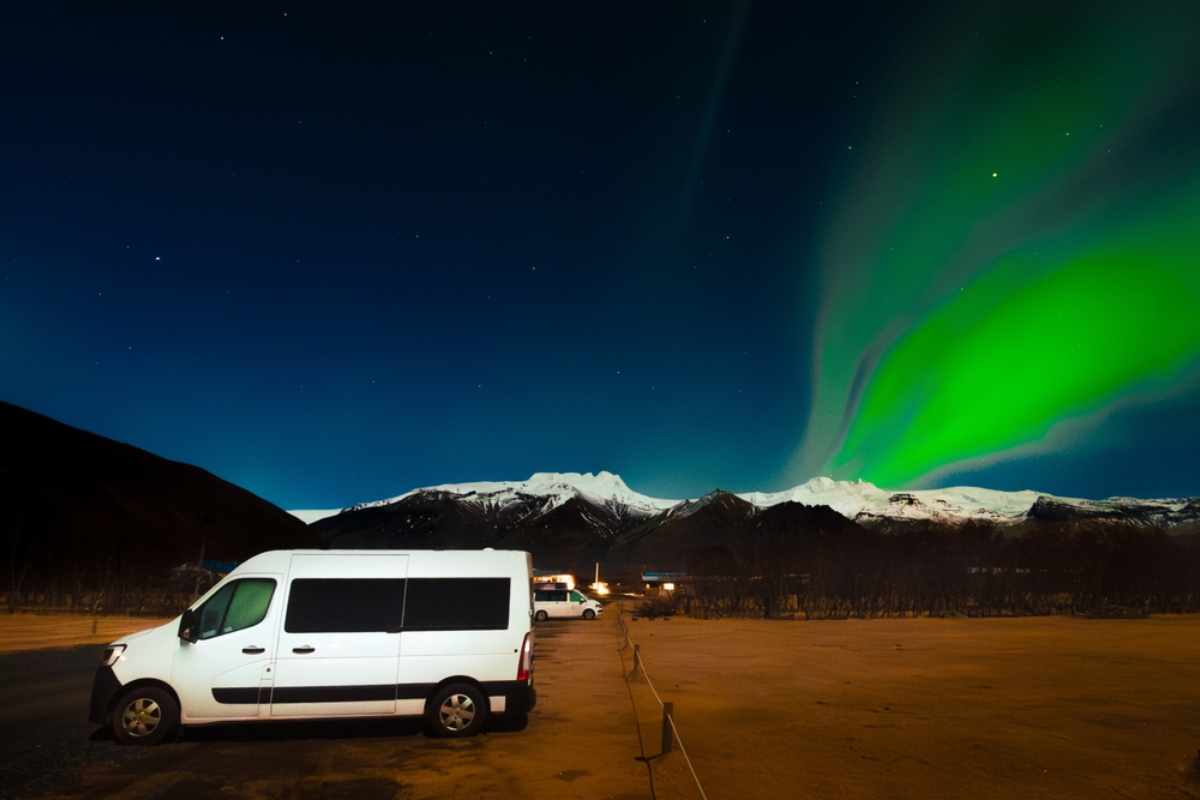
 By
By 
